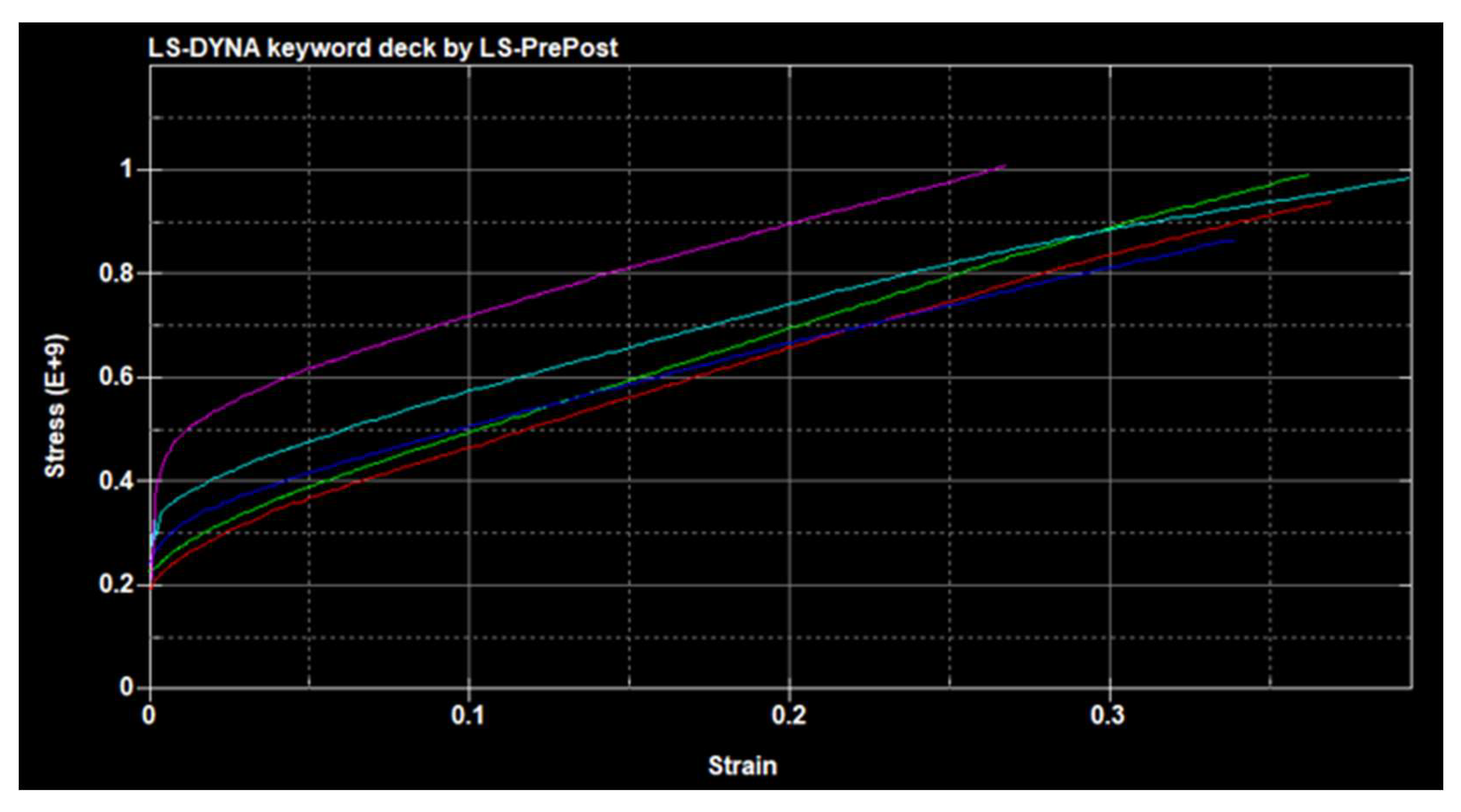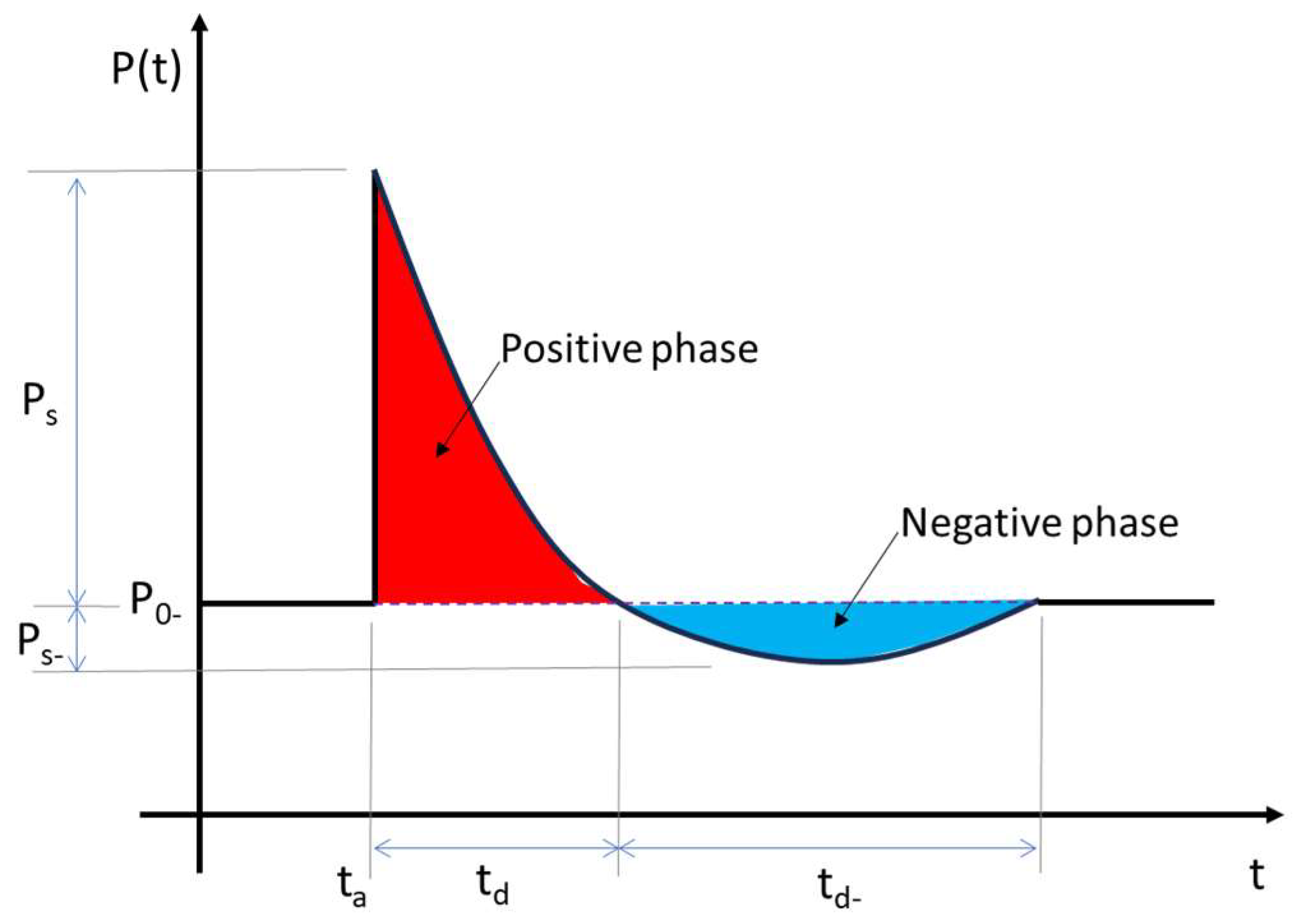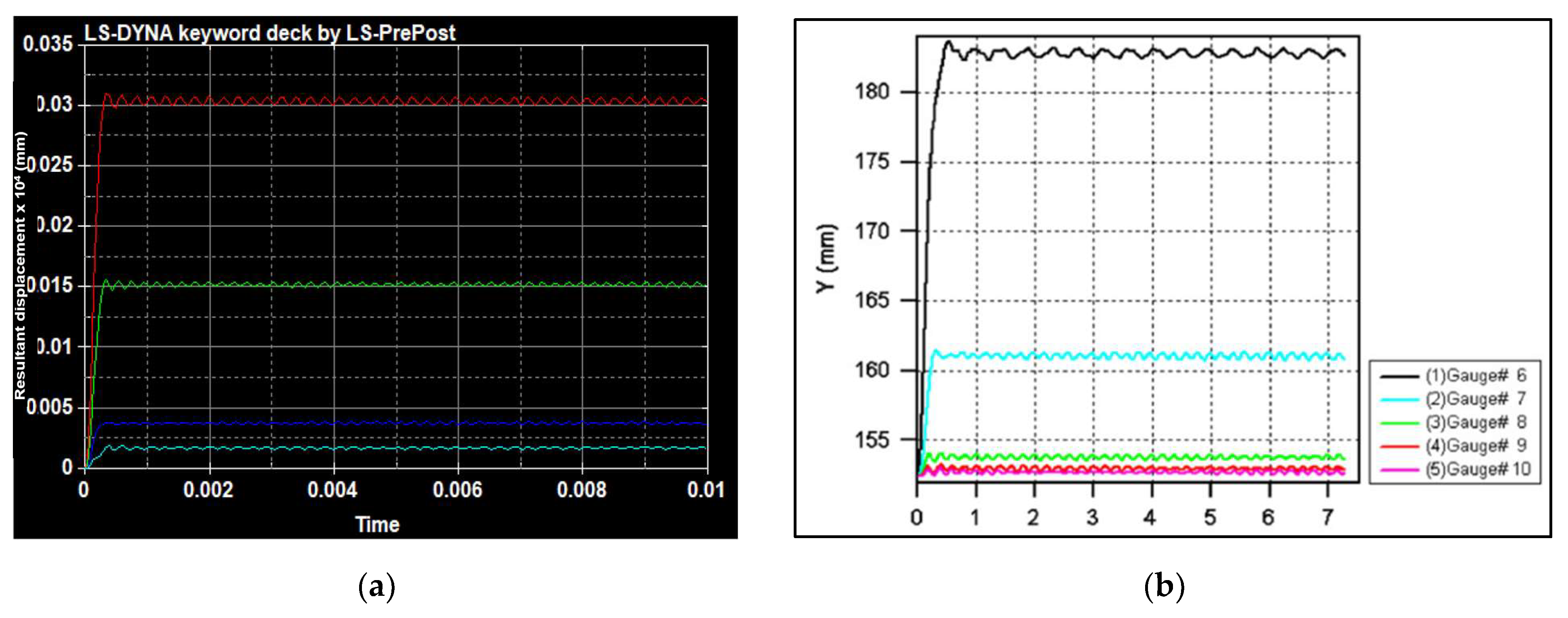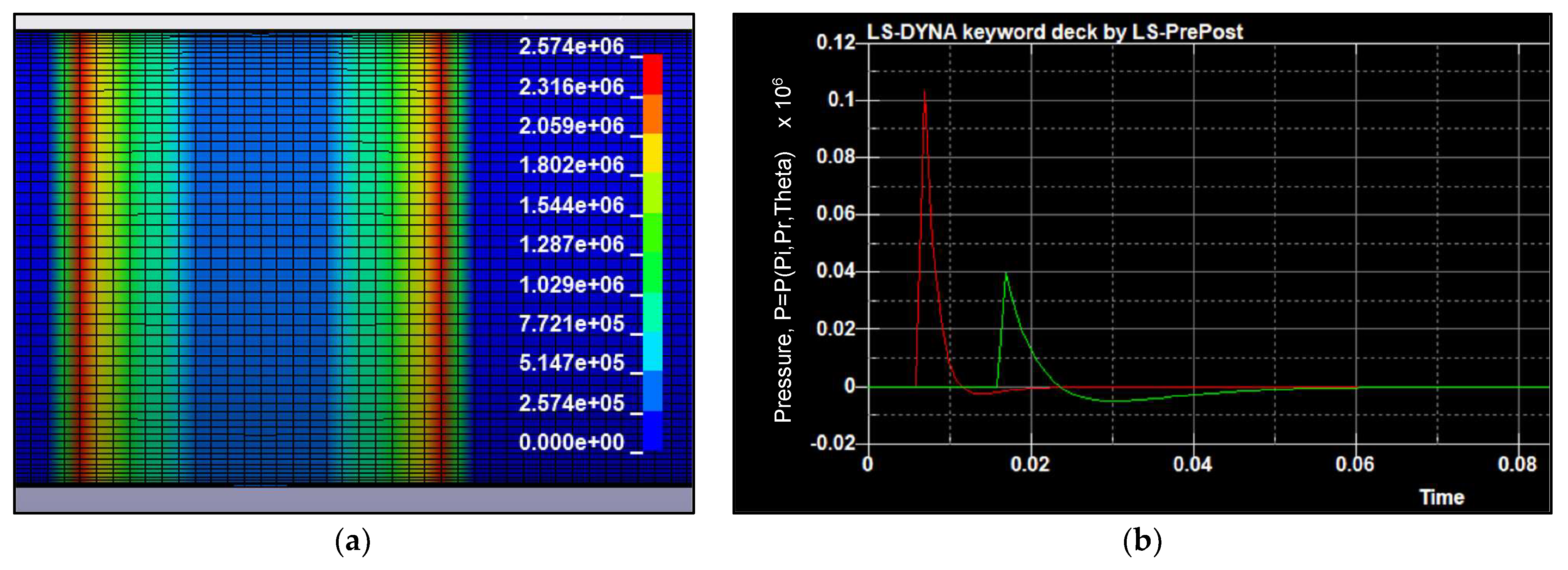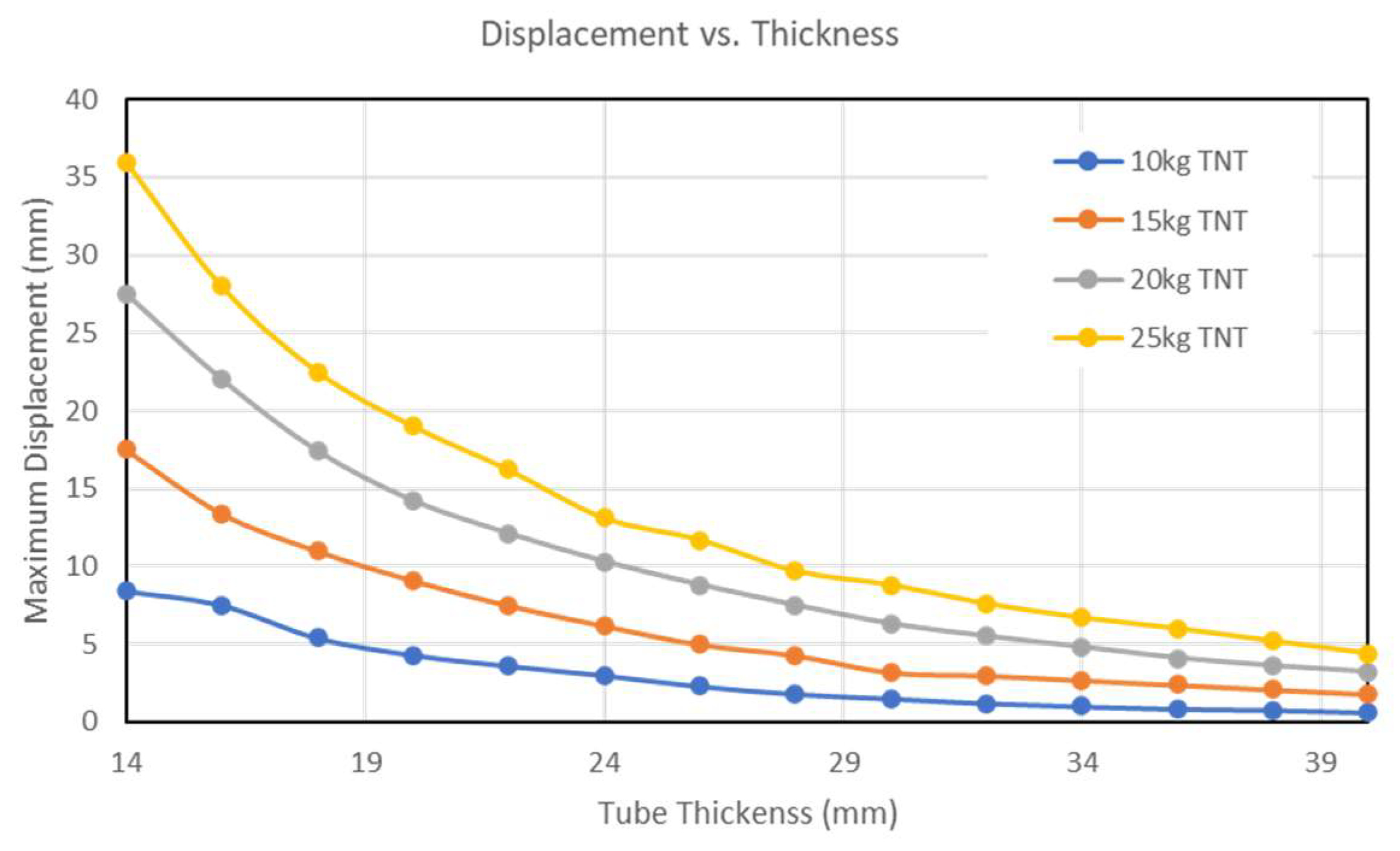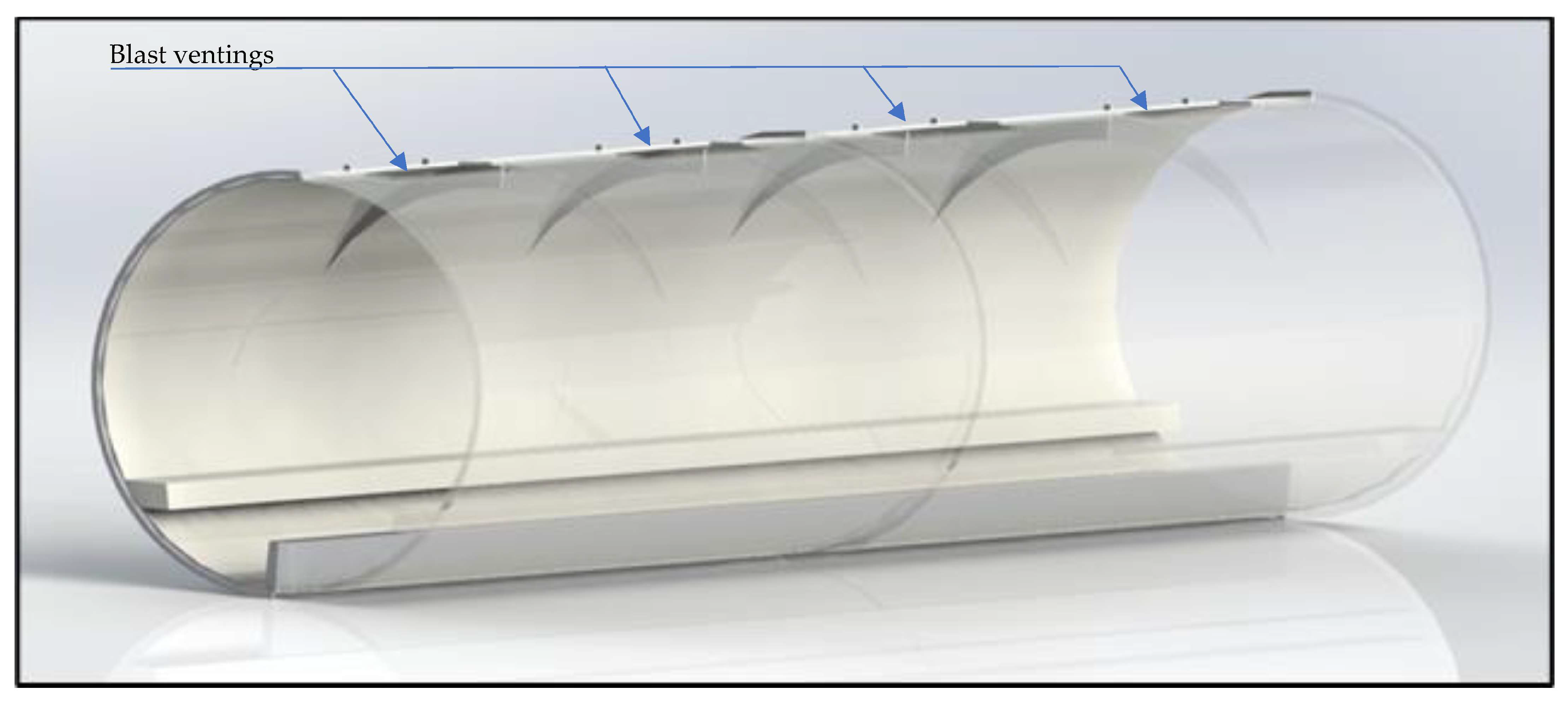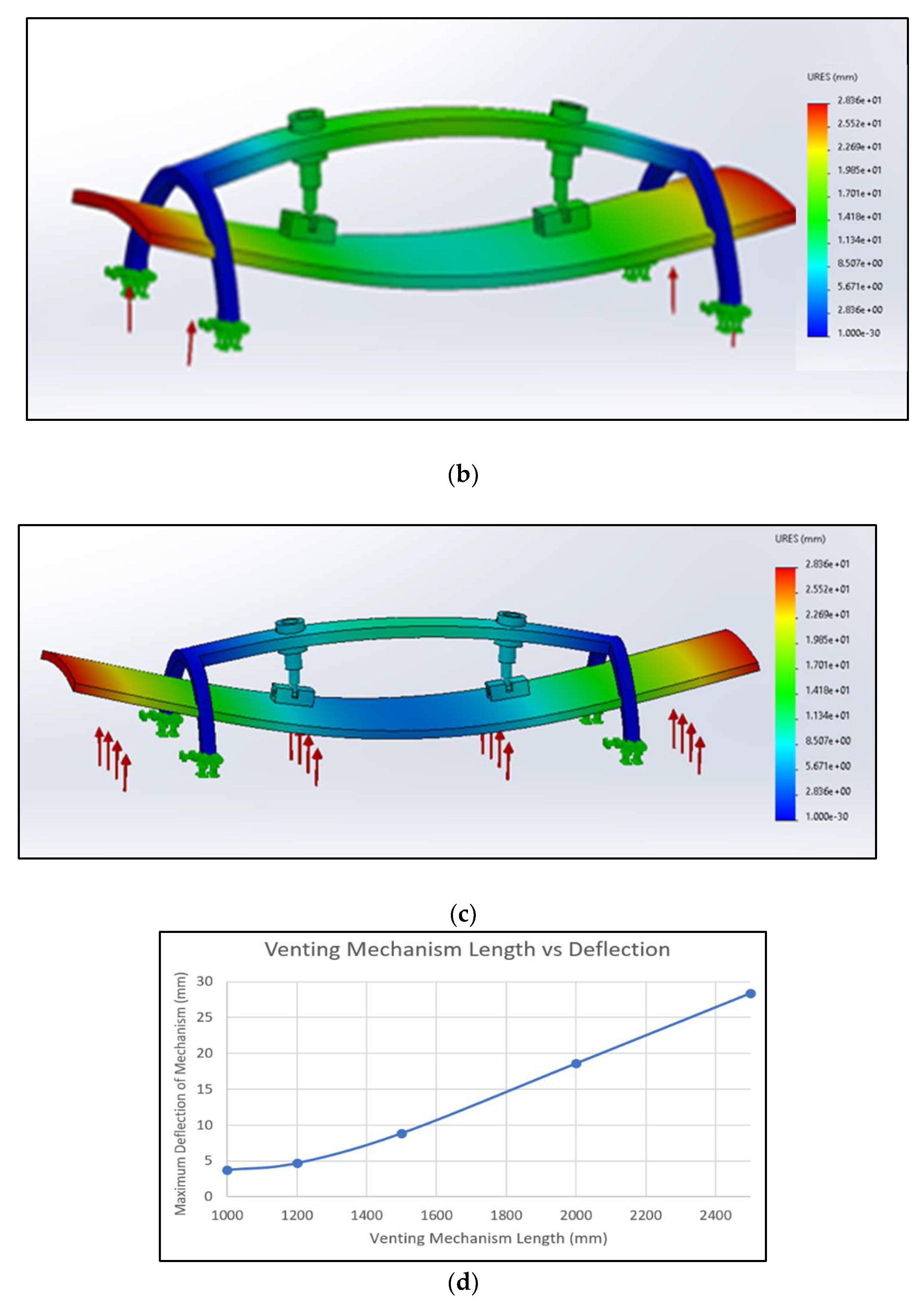1. Introduction
Transport infrastructures are the critical infrastructures that are vital for modern society, green economy and high quality of life. Any disruption to a critical infrastructure can cause widespread effects on individuals, communities, economy, and the environment [
1,
2,
3]. In general, physical infrastructures can be at risk of natural and man-made hazards. Motivations for man-made attacks include financial gain, espionage and terrorism. The UK National Infrastructure Commission has highlighted that investment in infrastructure resilience often occurs after a disruption or a failure. The commission has suggested that infrastructure operators establish strategies, methods and tools for long-term infrastructure resilience, which could require new investments for design modification, retrofit, renovation or renewal [
4]. The projections and modelling of natural and man-made hazards are often uncertain, implying that the exact nature and magnitude of the increased risk to critical infrastructures is unclear and unfathomable. For example, estimates for changes in windstorms, flash-flooding, lightning and terrorist attack events are particularly uncertain. The uncertainty and the unknown can make resilience planning and investment decisions highly challenging, chaotic and indeterministic. Therefore, it is very necessary to develop a variety of tools, methods, strategies and pragmatic tactics to support the development of short- and long-term resilience plans, including flexible decision-making frameworks and alternative design solutions that account for uncertainty, and adaptation options, which can provide value-added benefits under a wide range of extreme event scenarios [
5,
6]. These scenarios should span across various types and ranges of potential tactics that malicious actors may use or incite to carry out an attack on the infrastructure.
Researching the effects of blast loading on infrastructure is an evolving domain within civil and mechanical engineering asset management frameworks. Modern-day attacks from terrorism remain a current and ever-changing threat to society, in particularly to public transportation, where studies have shown that, between 1970 and 2010, there have been a total of 3955 attacks on public transport systems recorded in over 82 countries [
7,
8]. Without any data providing evidence of reduction in the threats from terrorism in the coming years, continued research into the effects of blast loading and blast mitigation methods on engineering structures and components of critical infrastructures (especially thin-shell structures for hyperloop systems) should be developed to prevent fatalities and create a safer environment for the public. However little research has gone into the domain of blast loading on thin-shell cylinders, although cylindrical structures are widely used in the transportation industry such as tunnelling systems, tube systems, pipelines, and hyperloop systems [
9,
10]. A clear knowledge gap has therefore been identified, and this study aims to consolidate further understanding on how cylindrical thin-shell structures, which form an essential part of modern super-high-speed guided transport (i.e., Hyperloop systems), react under blast loading conditions.
Figure 1 illustrates the hyperloop tunnelling system where cylindrical shell theory applies. The widely used materials for curved structures or structural thin shells tend to be steel or other metallic materials. There has been a plan to adopt composites materials for the thin shells in the future. However, the scope of this study will be placed on the metallic materials.
The origins of thin-shell structures predate modern day architecture and design, where the development of shell analysis was first focused on by Bernoulli and Euler [
11]. However, as early theories of thin-shell analysis were presented by 2D partial differential equations, they are commonly considered as an approximate technique. Accuracy was limited to the assumptions made in the analysis and boundary conditions. Improving the approximations for thin-shell analysis has been a constant development process, where in the 1950s scientists such as Clough developed Finite Element Analysis [
12]. Advancements in the understanding of thin-shell structures have allowed engineers and designers to utilise these theories to develop vehicles in industries such as aerospace. NASA’s Saturn V rocket, as well as the Airbus A380 and Boeing 787 Dreamliner are all examples of how thin-shell mechanics can be used in the domain of vehicle design [
11]. Shell structures can be considered to be thin when the following criteria are met [
13]:
In general, thin-shell structures have a very high value of spatial stiffness and a large load-bearing capacity due to the curvature of the surface. This often stems from the combined arching and membrane stiffening effects. The thinness of shell structures further helps resist traverse loads through the internal membrane stresses [
14]. However, it is to be noted that having an overly thin shell can cause critical structural instabilities when subject to external forces such as blast loading.
Simulations of blast waves, as illustrated in
Figure 2, can be easily characterised using a pressure–time function, describing how the blast develops throughout each stage of detonation [
5,
15]. The size of the pressure recorded is defined depending on the stand-off distance to the blast and the size of the charge [
16], with two main positive and negative phases. The arrival time
ta of the blast is where
ps (peak overpressure) occurs. The blast then falls back to
po at time
td, where the pressure then drops below the reference until it reaches maximum negative pressure
pmin. The positive phase of the pulse duration can be expressed using the Friedlander Equation (2), showing the sudden step change in pressure, followed by an exponential decay in pressure [
17].
This study amins to investigate the dynamic response of metallic cylindrical thin-shell structures when exposed to external blast loading forces, in order to gain new insights into the resilience of the hyperloop transport systems. Note that metallic materials have been adopted widely for the design of modular tubes in practice. Whilst some areas of design encourage the buckling of thin-shell cylinders [
18], increasing the ability of thin-shell cylinders to withstand buckling from blast loading in an operating environment is a crucial focus of this research. In this study, simulations of extreme event scenarios will be conducted using a nonlinear finite element method based on LS-DYNA. The key research objectives are (i) to gain a better understanding of blast loading effects on cylindrical thin-shell structures and the effects the charge has on rigid bodies; (ii) to establish an appropriate case study and simulate how blast loading can affect its structure; and (iii) to design and simulate blast mitigation techniques to reduce blast impulse, deformation and fatality rates for the selected case study. The insights derived from this study will help hyperloop engineers by offering new alternative solutions to enable the resilience-based design of the hyperloop systems.
4. Discussions
The threats to critical infrastructures such as hyperloop systems exist in the transportation industry [
38,
39,
40,
41]. In many countries, such a risk is deemed to be very to extremely high [
42,
43,
44]. Our study is thus critical to protect and to improve resilience of the transportation infrastructures.
Figure 5 demonstrates the convergence curve depicting the Von Misses stress vs. time to converge using the finite element simulations within the parametric study, and considers mesh convergence analysis. It reveals that a mesh size larger than 25 mm produces slightly unstable values for stresses, creating inaccurate blast loading results. This is relatively similar to other studies in the area [
45,
46,
47]. However, a mesh element size smaller than 15 mm is an unnecessary value as stress has reached a stable value where convergence time significantly increases. Due to the large displacement values when simulating the mesh convergence, it also limits the accuracy of the model as the program does not timely update the blast pressure load directions as the tube deforms. This aspect can be resolved by a nonlinear iterative simulation, since it can timely update the program at each solution step depending on its deformation. Based on our parametric study, 20 mm element size has been selected as the optimum value for modelling in the study, and is brought forward for meshing the case study. However, it was found that simulations using 20 mm mesh size within LS-DYNA for our case studies prove to be computationally expensive. This is due to the scale of the hyperloop model when attempting to mesh the 20 m as opposed to the 0.8 m parametric study. Our study adopts full-scale, real-world dimensions of the hyperloop tunnelling system. As a result, the mesh element sizes have been increased to 30 mm for the tube model within LS-DYNA package, as this proves the optimum size between accurate readings and low convergence cost. This is reasonably a sufficient mesh density number to provide ample degrees of freedom for blast loading.
MAT_024 (Piecewise linear plasticity) from the materials model catalogue is chosen to model the steel material in the hyperloop case study. Based on our observations, MAT_024 offers an accurate maximum deformation, with only a 4% percentage difference between the parametric study and LS-DYNA simulations (as shown in
Table 3 and
Table 4). MAT_024 allows the strain rates of steel (see
Appendix A,
Figure A1) to be applied, meaning accurate deformation characteristics are simulated at high blast loading characteristics. The table ID of each strain rate allows for effective plastic strain vs. yield stress to be interpolated [
48]. Although more in-depth failure criteria of composite structures can be modelled with MAT_MODEFIED_PIECEWISE_LINEAR_PLASTICITY, this is irrelevant for the case study, as only steel is simulated. However, this will be part of our future study where composites materials will be considered.
Figure 6 highlights the slight discrepancies in deformation characteristics between experiments conducted by Rushton et al. [
25] and the LS-DYNA simulations, where there is seen to be a maximum deformation difference of 4.6 mm. Reasons for this could stem from the fact that the Lagrangian LS-DYNA simulation has numerical issues due to element distortion limits which can occur when modelling large deformation [
35]. Multi-material arbitrary Lagrange–Eulerian (ALE) is another simulation method that can be used to simulate dynamic deformations more accurately. Zaghoul et al. [
49] uses this for blast effects on passenger trains, where structural parts are modelled using Lagrangian mesh and the air domain in which the blast waves travel is a Eulerian mesh. ALE Mapping for increased accuracy is used where pressure from a 1D air domain is mapped into the 3D domain. Despite yielding accurate results, these computational techniques are costly and have large computation times, which are not desired for the full-scale hyperloop case study [
50].
Considering the blast mitigation implementation strategies,
Figure 11 shows how hyperloop tube thickness and TNT loading alters the maximum deformation of the thin-shell structure. Results correlate to initial assumptions, where increasing TNT loading and reducing shell thickness increases deformation responses. The parametric simulation and case study use shell element formulation 16 (ELFORM_16) to achieve the accuracy of the numerical study. Detailed results can be found in
Appendix A. ELFORM_16 is an ideal shell formulation for non-linear analysis, as sufficient warping stiffness means that simulations remain stable despite deformations [
50]. Although it can be up to three times more computationally expensive than ELFORM_2 (Belytschko–Tsayshell), traverse shear correction means that no hourglassing effects can take place [
51]. Spherical free air bust (BLAST_2) was used in the parametric and hyperloop case study to simulate blast loading TNT. BLAST_2 simulates the blast waves propagating spherically outwards with no prior contact on surfaces such as the ground before it interacts with the hyperloop structure [
24]. With the charge suspended in air, this offers the most accurate recreation of an explosion from a terrorist threat. Parametric simulations are conducted by varying tube thicknesses. As the hyperloop systems are still in their concept design stages, a standardised thickness for tube infrastructure has yet to be set. Our new findings demonstrate that 30 mm tube thickness would be the desired dimensions, as there is negligible deformation at low TNT loads. With an estimated economical infrastructure cost of USD 4,000,000 per km [
52], any thicker would generate large ramifications for development pricing. Similarly, increasing the size of the venting mechanism will also substantially increase infrastructure cost.
Another important facet is the deformation of the hyperloop tube when full-scale venting areas are introduced to the hyperloop tube system. The virtual experiments are carried out with a tube thickness of 20 mm and 20 kg TNT load. Although the initial simulation would have some inaccuracy due to a sealed tube not being simulated with a lower internal pressure value, blast venting is assumed to depressurise the tube. This means it can be accurately modelled at atmospheric pressure. As displayed in
Figure 11, a positive linear trend between venting length and tube deformation can be observed. This can be accounted for due to the increased hoop stress,
(as shown in Equation (4)) and longitudinal stress,
(as shown in Equation (5)) caused from removing sections of the cylindrical tube. Reducing thickness (
t) of the cylinder wall increases both
and
which accounts for the increased deformation when the hyperloop tube is fitted with venting ports. From these findings, it could be concluded that venting may not be the most appropriate method of reducing blast loading implications, where extreme levels of deformation could cause dangerous amounts of fragmentation. This could be countered by adding isotropic shell configurations or stiffening hoop plates to increase the rigidity of the hyperloop tube [
14]. Although, in reality, the venting areas could help prevent an increase in
and
due to the decrease in pressure acting on the cylinder surface, the current simulations are limited by how it can model pressure dissipation. The current model uses LOAD_BLAST_SEGMENT simulations, meaning blast pressure for a given segment is calculated regardless of other segments subject to that same blast pressure. Segments are unaware of venting holes for pressure, calculating results in spite of the pressure load acting on other segments. Whilst this characteristic is expected for empirical blast models and acceptable for calculating blast responses [
45,
46,
47], further development using MM-ALE simulations will provide further insight into blast loading and pressure dissipation on hyperloop structures. This will form a part of our future research.
When considering the blast responses of venting mechanism (see details in
Appendix A,
Table A2), picking the optimum dimensions would have to be a balance between cost of manufacture, deformation caused, and venting area exposed. The venting mechanism that is 1000 mm in length (as illustrated in
Figure 12)) only yields 4 mm of maximum blast deformation, with the actuators and venting plate withstanding blast force and not becoming compromised. Although this ensures the reusability and modularity of the venting mechanism, dimensions are below the optimum 2 m venting length found by Larcher et al. [
15]. Our results thus provide a new alternative venting mechanism suitable for the hyperloop tube system.
Future considerations of this study are to not just blast deformations within the hyperloop model, but also pressure drop values from the various venting strategies. Although deformation characteristics have proven to be an insightful study into how hyperloop thin-shell structures react under blast loading, further pressure analyses can enable fatality models to be built. To determine pressure values that coincide with the effects of venting, a multi-material ALE simulation method can be adopted in future study. This would ensure air confined within the tube, as well as air surrounding the tube, would be modelled to enable pressure variations to be analysed. Multi-material ALE can simulate wave reflection and resultant superposition within the tube, a phenomenon that has been highlighted by Zaghloul et al. [
49] as a critical factor of deformation in confined spaces. Other blast loading mitigation design improvements can be simulated in future studies to compare what methods are the most effective at reducing the failure of hyperloop infrastructure. Examples could include redesigning the hyperloop tube by adding composite isotropic shell configurations into the internal thin shell to improve its capacity to withstand pressure loading [
14,
53,
54,
55,
56,
57,
58,
59,
60]. As previously mentioned, modelling different blasts using the LOAD_BLAST_ENHANCED keyword, such as hemispherical or surface blasts, could be investigated to see how deformation varies. This could be conducted both on the inside and outside of the tube to model various blast loading scenarios.
